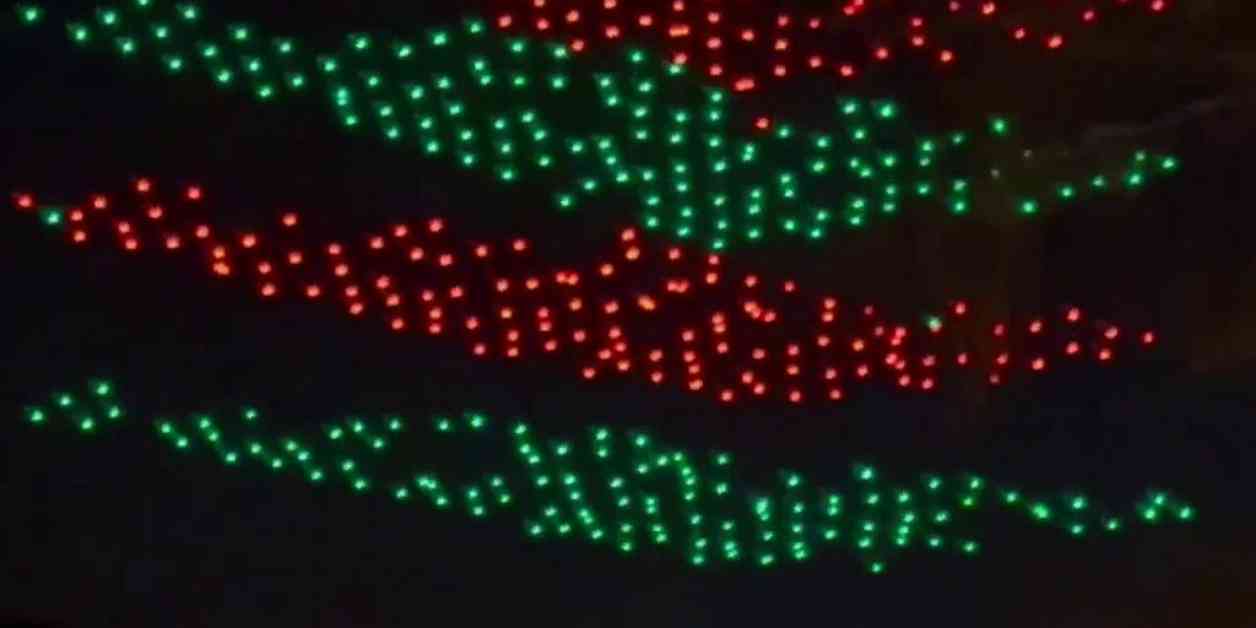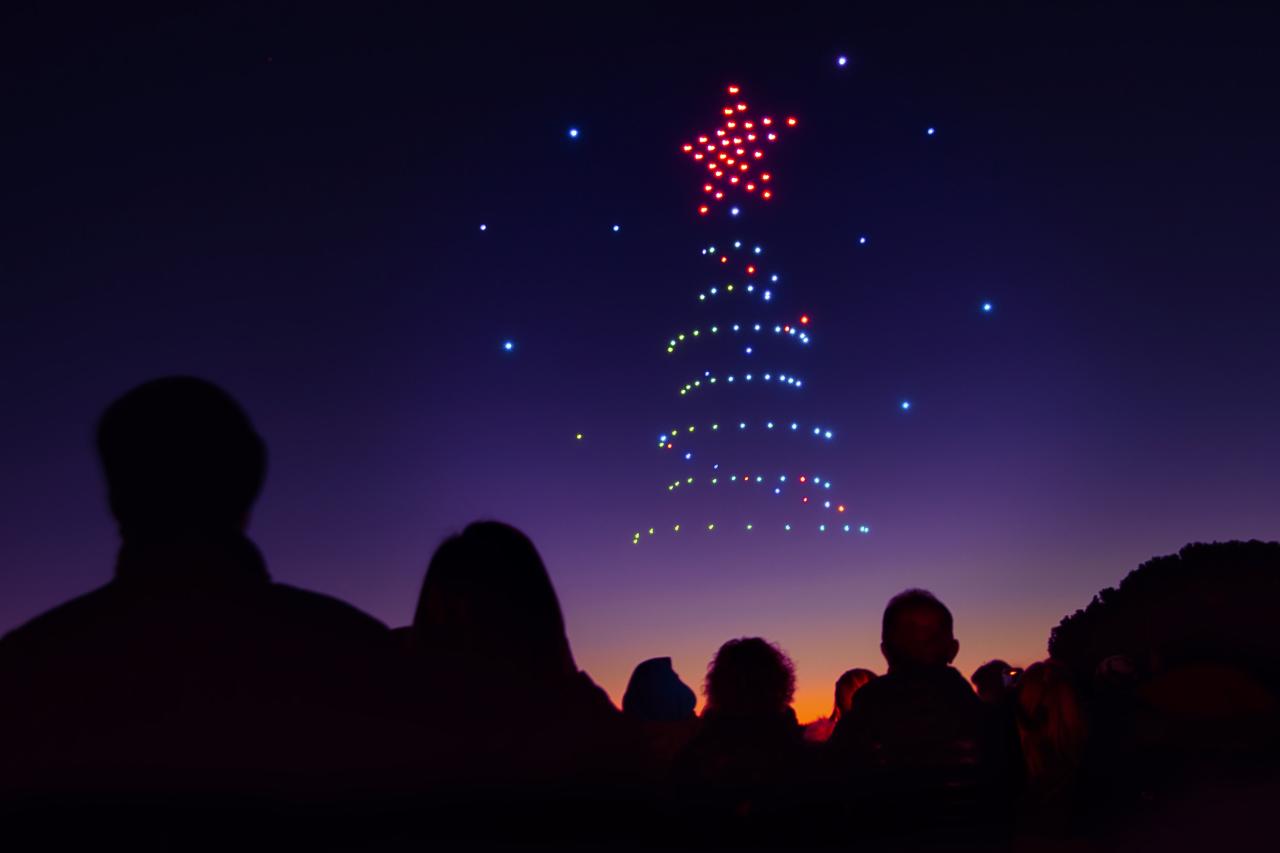Drone show accidents, while relatively infrequent, highlight critical safety concerns within the rapidly expanding world of drone technology. These incidents, ranging from minor malfunctions to catastrophic failures, underscore the need for robust safety protocols, advanced technology, and rigorous pilot training. This exploration delves into the various facets of drone show accidents, examining their causes, consequences, and potential solutions to ensure the continued safe and spectacular deployment of drone light shows.
Understanding the complexities involved requires a multi-faceted approach, considering technological limitations, human error, and the evolving regulatory landscape. By analyzing past incidents and exploring emerging technologies, we aim to provide a comprehensive overview of this crucial topic, fostering safer practices within the drone show industry.
Drone Show Accidents: A Comprehensive Analysis
Drone shows, while visually spectacular, present unique safety challenges. The increasing complexity and scale of these displays necessitate a thorough understanding of the risks involved and the implementation of robust safety measures. This analysis explores the various types of accidents, contributing factors, existing regulations, and potential technological solutions to enhance the safety of drone shows.
Types of Drone Show Accidents

Drone show accidents can be broadly categorized into malfunctions, collisions, and human errors. Each type presents distinct challenges and necessitates specific mitigation strategies.
| Accident Type | Description | Frequency (Estimated) | Contributing Factors |
|---|---|---|---|
| Malfunctions | Unexpected failures in drone systems, including motor failures, GPS signal loss, battery issues, or software glitches. | Moderate | Poor maintenance, outdated firmware, manufacturing defects, environmental factors (e.g., extreme weather). |
| Collisions | Impacts between drones or between drones and other objects (e.g., buildings, trees, spectators). | Low, but potentially high impact | Poor flight planning, inadequate spacing between drones, loss of control, environmental factors (e.g., strong winds). |
| Human Error | Mistakes made by pilots or ground crew, including incorrect programming, inadequate pre-flight checks, or poor communication. | High | Inadequate training, fatigue, stress, poor communication protocols, lack of experience. |
The severity of accidents varies greatly. Collisions can result in significant damage to drones and potential injury to bystanders. Malfunctions can lead to uncontrolled drone behavior, posing a safety risk. Human error often contributes to both malfunctions and collisions, highlighting the critical role of training and robust protocols.
Safety Regulations and Protocols

Existing safety regulations for drone shows vary considerably across jurisdictions. Consistent and comprehensive standards are crucial for enhancing safety.
- Many countries require pilot licensing and certification for commercial drone operations, including drone shows.
- Regulations often specify minimum distances from spectators and obstacles.
- Pre-flight inspections and maintenance protocols are usually mandated.
- Emergency response plans are often required for large-scale shows.
- Some jurisdictions have specific airspace restrictions for drone operations.
Pilot training is paramount. Comprehensive training programs should cover emergency procedures, flight planning, risk assessment, and effective communication. Certification ensures a minimum level of competency.
Improved safety protocols could include mandatory pre-flight simulations, real-time drone monitoring systems with automated alerts for potential collisions, and standardized emergency response procedures across all jurisdictions.
Technological Factors Contributing to Accidents, Drone show accident
Several technological limitations contribute to drone show accidents. Addressing these limitations through innovation is crucial for enhanced safety.
- Limited battery life, leading to mid-flight power failures.
- GPS signal interference or loss, resulting in navigation errors.
- Vulnerability to environmental factors (e.g., strong winds, rain).
- Communication system failures, leading to loss of control.
Software glitches and outdated firmware can significantly impact drone performance and stability. Regular firmware updates and rigorous software testing are essential. The reliability and safety features of different drone models vary considerably. Choosing robust and well-maintained drones is crucial.
Human Factors in Drone Show Accidents

Human error plays a significant role in drone show accidents. Addressing these factors through training and improved protocols is vital.
| Error Type | Description | Impact | Mitigation Strategy |
|---|---|---|---|
| Inadequate Pre-flight Checks | Failure to properly inspect drones and equipment before a show. | Potential malfunctions during flight. | Mandatory checklists and thorough training on pre-flight procedures. |
| Poor Flight Planning | Insufficient consideration of environmental factors or obstacles. | Collisions with obstacles or other drones. | Detailed flight simulations and thorough risk assessments. |
| Communication Breakdown | Lack of clear communication between pilots and ground crew. | Uncoordinated drone movements and potential collisions. | Standardized communication protocols and regular training exercises. |
Fatigue, stress, and inadequate training significantly impair pilot performance. Implementing measures to manage pilot workload, promoting rest, and providing comprehensive training are essential.
Improving pilot situational awareness can be achieved through enhanced flight visualization tools, improved communication systems, and training in risk management and decision-making under pressure.
Drone show accidents, while rare, highlight the inherent risks involved in these spectacular displays. Understanding these risks is crucial, and researching successful events like those showcased in a recent article on the florida drone show can offer valuable insights into safety protocols. Analyzing both successful and unsuccessful events helps improve safety measures and ultimately prevent future drone show accidents.
Emergency Response and Damage Control
Effective emergency response protocols are essential for minimizing the consequences of drone show accidents.
A step-by-step plan for handling a major accident might involve:
- Immediate halt of the show and secure the area.
- Assess the damage and identify injured individuals.
- Contact emergency services and relevant authorities.
- Implement procedures for recovering downed drones.
- Conduct a thorough investigation to determine the cause of the accident.
Minimizing environmental impact involves responsible drone recovery and disposal of damaged equipment. Public safety risks can be reduced through effective crowd control and communication.
Drone show accidents, while rare, highlight the inherent risks in large-scale aerial displays. Understanding these risks is crucial for ensuring safety, and recent incidents underscore this need. For instance, investigations into a specific florida drone accident revealed crucial safety oversights that could inform future regulations and practices for drone shows, preventing similar occurrences in the future. Ultimately, a thorough analysis of all such accidents, including those involving individual drones and larger shows, is necessary for continued safe operation.
Case Studies of Drone Show Accidents
Analyzing past accidents provides valuable insights for improving safety practices. While specific details of accidents are often kept confidential for various reasons, general scenarios can illustrate key learnings.
Recent drone show accidents highlight the need for stringent safety protocols. The incident prompted discussions about emergency contact procedures, leading some to wonder if contacting the norad santa tracker phone number (obviously not for Santa!) would be appropriate for such situations, although it’s highly unlikely to be relevant. Ultimately, improved drone show regulations are crucial to prevent future mishaps.
Case Study 1: A software glitch caused multiple drones to lose control during a large-scale show, resulting in several collisions and minor damage. The investigation revealed outdated firmware and inadequate software testing. This led to stricter firmware update protocols and more rigorous software testing procedures.
Case Study 2: Strong winds unexpectedly affected a drone show, causing several drones to deviate from their planned flight paths and resulting in near misses. This highlighted the need for more sophisticated wind sensors and improved flight planning algorithms that incorporate real-time weather data.
Case Study 3: Human error during the pre-flight checks led to a battery malfunction, causing a drone to fall into the audience. This emphasized the importance of comprehensive pre-flight checklists and rigorous pilot training on safety procedures.
These examples demonstrate how thorough investigations and analysis of past accidents can inform the development of better safety practices and technological improvements.
Future Technological Solutions for Accident Prevention
Emerging technologies offer significant potential for enhancing drone show safety.
- Improved GPS systems with enhanced accuracy and redundancy.
- Autonomous collision avoidance systems using advanced sensors and AI.
- Advanced communication systems with increased reliability and range.
- Real-time drone health monitoring systems.
Artificial intelligence and machine learning can be used to analyze flight data, identify potential risks, and optimize flight paths. Autonomous drones, while offering potential benefits, raise ethical considerations regarding decision-making during emergencies.
The evolution of drone technology presents both extraordinary opportunities and significant challenges. While drone shows offer breathtaking spectacles, the potential for accidents necessitates a proactive and comprehensive approach to safety. Through improved regulations, advanced technologies, and enhanced pilot training, we can mitigate risks and ensure the continued enjoyment of these spectacular displays without compromising public safety or environmental considerations.
The future of drone shows hinges on our collective commitment to responsible innovation and unwavering safety.
Detailed FAQs: Drone Show Accident
What is the most common cause of drone show accidents?
While various factors contribute, human error, including pilot mistakes and inadequate training, is frequently cited as a primary cause.
What insurance is needed for drone show operations?
Comprehensive liability insurance is crucial to cover potential damages and injuries resulting from accidents. Specific requirements vary by location and the scale of the show.
How are drone shows regulated internationally?
Regulations vary widely by country and region, often addressing aspects like pilot licensing, airspace restrictions, and operational procedures. It’s essential to research and comply with local laws.
What is the role of weather in drone show accidents?
Adverse weather conditions, such as strong winds or heavy rain, can significantly impact drone stability and performance, increasing the risk of accidents.
